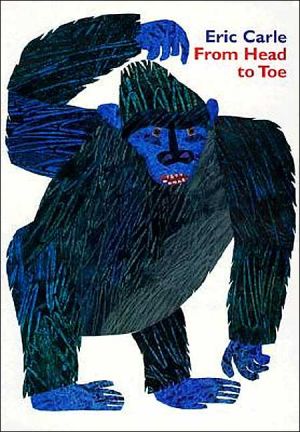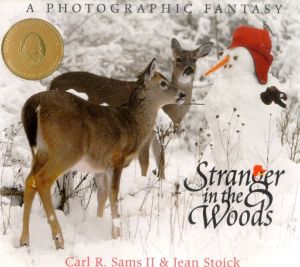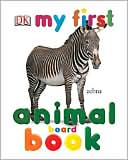Never Smile at a Monkey: And 17 Other Important Things to Remember
When it comes to wild animals, everyone knows that there are certain things you just don’t do. It's clearly a bad idea to tease a tiger, pull a python's tail, or bother a black widow spider. But do you know how dangerous it can be to pet a platypus, collect a cone shell, or touch a tang fish? Some creatures have developed unusual ways of protecting themselves or catching prey, and this can make them unexpectedly hazardous to your health.\ In this dynamic and fascinating picture book by Steve...
Search in google:
When it comes to wild animals, everyone knows that there are certain things you just don’t do. It's clearly a bad idea to tease a tiger, pull a python's tail, or bother a black widow spider. But do you know how dangerous it can be to pet a platypus, collect a cone shell, or touch a tang fish? Some creatures have developed unusual ways of protecting themselves or catching prey, and this can make them unexpectedly hazardous to your health. In this dynamic and fascinating picture book by Steve Jenkins, you'll find out what you should never do if you encounter one of these surprisingly dangerous animals.Children's LiteratureYoungsters know that many creatures are dangerous. Here, Steve Jenkins chooses to focus on some whose threats are not obvious. He devotes one or two pages to each of eighteen animals that can be hazardous in a variety of ways. "Never " warns each informative introduction. The sentences finish "pet a platypus," "collect a cone shell," "harass a hippopotamus," "jostle a jellyfish," or "step on a stingray." This liberal use of alliteration leads to descriptions of the unfortunate consequences of such actions. The final advice—"NEVER smile at a monkey!"—warns that showing your teeth may be interpreted as an aggressive gesture, and the result may be violent. Jenkins achieves remarkable naturalistic results with his cut paper collages; he designs his pages using extra-large type for the headings and blocks of regular text for the descriptions. The final four pages offer further information along with a small picture of each creature included in the text and a bibliography. The strikingly contrasting pictures of the monkeys on the front and back of the jacket and cover are sure to attract attention. Reviewer: Ken Marantz and Sylvia Marantz
\ From the Publisher"A visually stunning book illustrated with cut paper and torn collages...This superlative illustrator has given children yet another work that educates and amazes."—School Library Journal, starred review\ "With his trademark cut-paper technique, Jenkins proves there may not be a texture that he can’t mimic on the page. The high-interest marriage of animals and danger, along with large, vibrant visuals, makes this a prime candidate for group sharing, and additional details and artwork at the end will flesh out some of the finer points for older children."—Booklist\ "[Monkey] takes the cheesy appeal of the dangerous-animals hook and makes it thoughtful and inventive without robbing it of its melodramatic charm. . . Crisp and clean detail particularly distinguishes this batch of Jenkins’ cut-out-collages, laid out with sharp edges against the white backgrounds, so the soft painterly striations and fibrous mottling stand out all the more."—Bulletin\ \ \ \ \ \ \ Children's Literature\ - Ken Marantz and Sylvia Marantz\ Youngsters know that many creatures are dangerous. Here, Steve Jenkins chooses to focus on some whose threats are not obvious. He devotes one or two pages to each of eighteen animals that can be hazardous in a variety of ways. "Never…" warns each informative introduction. The sentences finish "pet a platypus," "collect a cone shell," "harass a hippopotamus," "jostle a jellyfish," or "step on a stingray." This liberal use of alliteration leads to descriptions of the unfortunate consequences of such actions. The final advice—"NEVER smile at a monkey!"—warns that showing your teeth may be interpreted as an aggressive gesture, and the result may be violent. Jenkins achieves remarkable naturalistic results with his cut paper collages; he designs his pages using extra-large type for the headings and blocks of regular text for the descriptions. The final four pages offer further information along with a small picture of each creature included in the text and a bibliography. The strikingly contrasting pictures of the monkeys on the front and back of the jacket and cover are sure to attract attention. Reviewer: Ken Marantz and Sylvia Marantz\ \ \ School Library JournalGr 1–4—A visually stunning book illustrated with cut paper and torn collages. Jenkins's introductory warnings are gently alliterative: "NEVER pet a platypus"; "NEVER touch a tang." The gentleness stops there, however. "NEVER jostle a jellyfish. A box jellyfish, that is. Most jellyfish can sting people, but….If you are unlucky enough to become really entangled with a box jellyfish, you can die very quickly." Readers may enjoy staring deadly danger in the face, knowing that it is distant and rare. They'll also be treated to fascinating facts about creatures like the cassowary, electric caterpillar, cane toad, and puffer fish. Further reading is provided in the back matter, including an explanation of animals' need for powerful protection from their predators in the wild. This exceptionally well-written portion of the book is generously illustrated. The most eloquent of these cut paper and torn collages are on the front and back covers, which feature a rhesus monkey looking solemnly out, and then opening its large mouth filled with scarily sharp teeth. This superlative illustrator has given children yet another work that educates and amazes.—Susan Weitz, formerly at Spencer-Van Etten School District, Spencer, NY\ \ \ \ \ Kirkus ReviewsJudi Barrett may have cautioned readers to Never Take a Shark to the Dentist (illustrated by John Nickle, 2008), and Jean Conder Soule's sage advice to Never Tease a Weasel (illustrated by George Booth, 1964, 2007) has been passed on for generations. However, Jenkins's current list of instructions are for the more practical and realistic explorer. That is, if one happens to stumble upon a cassowary or a blue-ringed octopus. Eighteen alliterative rules showcase the dangerous defense mechanisms of animals found in the wild. Jenkins warns readers to "never pet a platypus," "never harass a hippopotamus" and, true to the title, "never smile at a monkey"-a Rhesus monkey to be precise. Baring teeth can be seen as an aggressive gesture and the monkey may attack. Illustrated with the author's trademark ingenious paper collage, the animals look serene and unassuming, as is often the case in nature. But turn to the detailed endnotes, and jaws and claws are out with a vengeance. Another stunning environmental lesson from an aficionado of animal behavior. (further reading) (Informational picture book. 5-8)\ \








